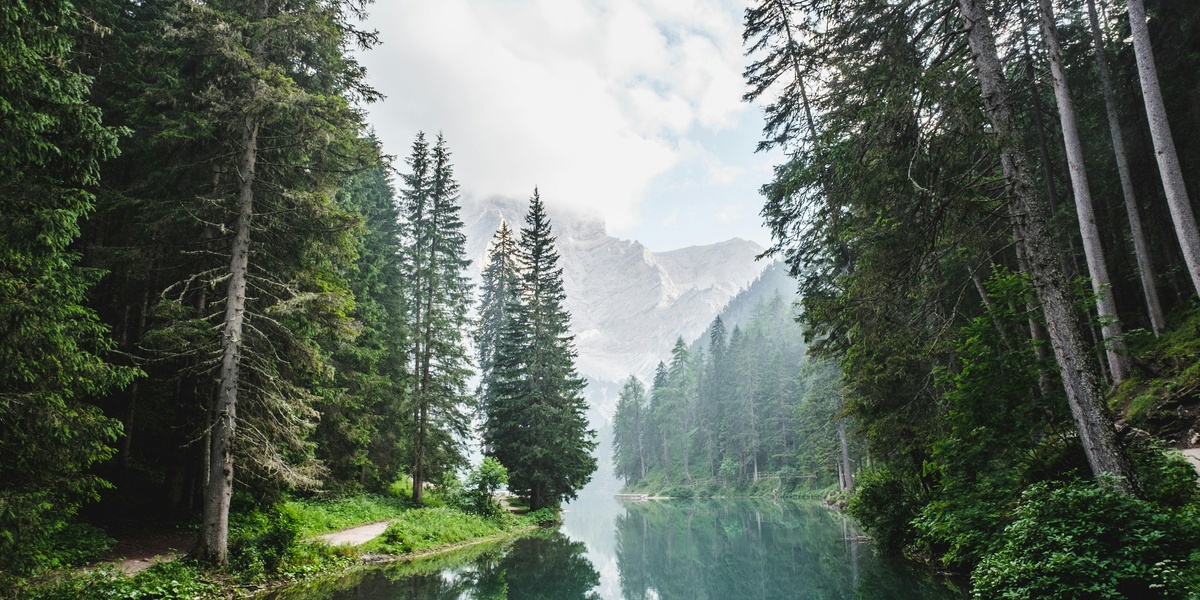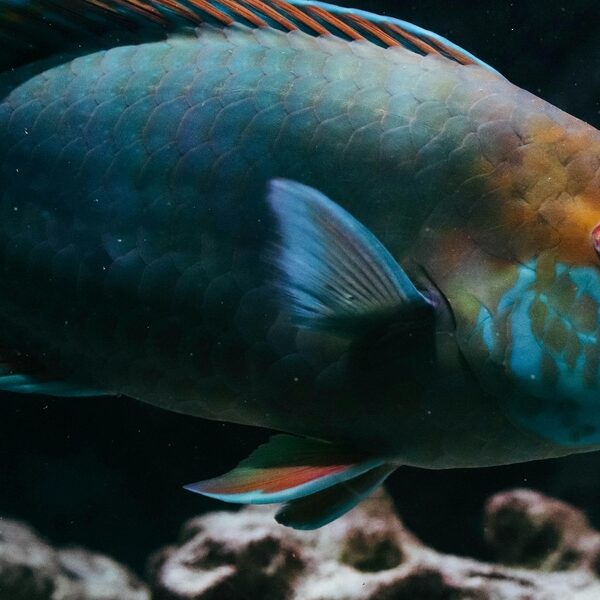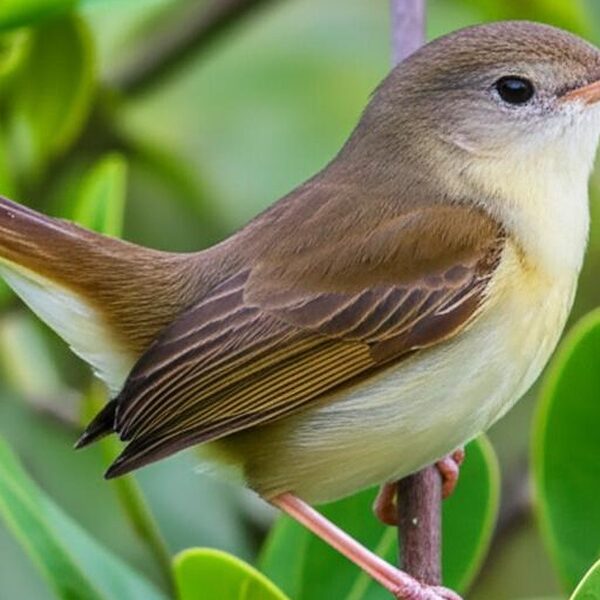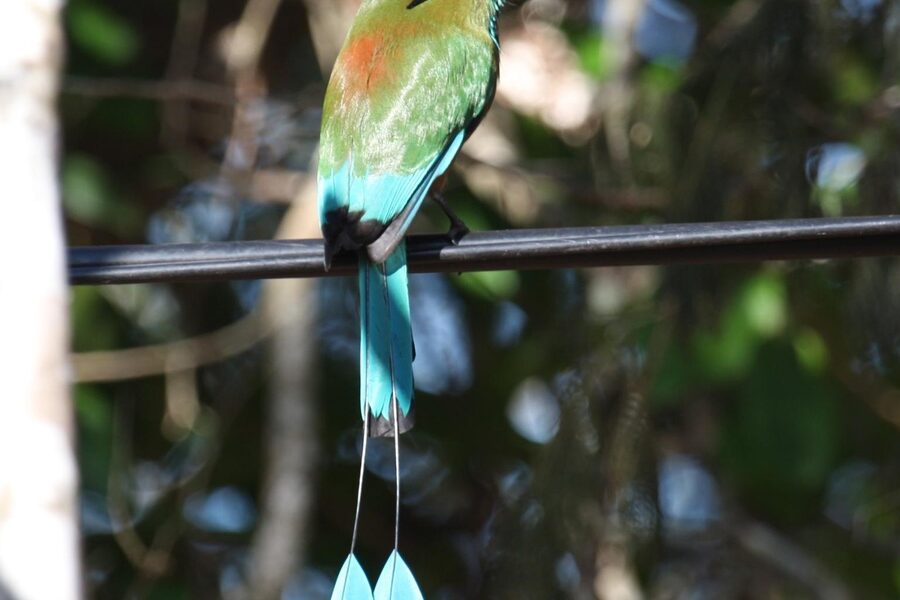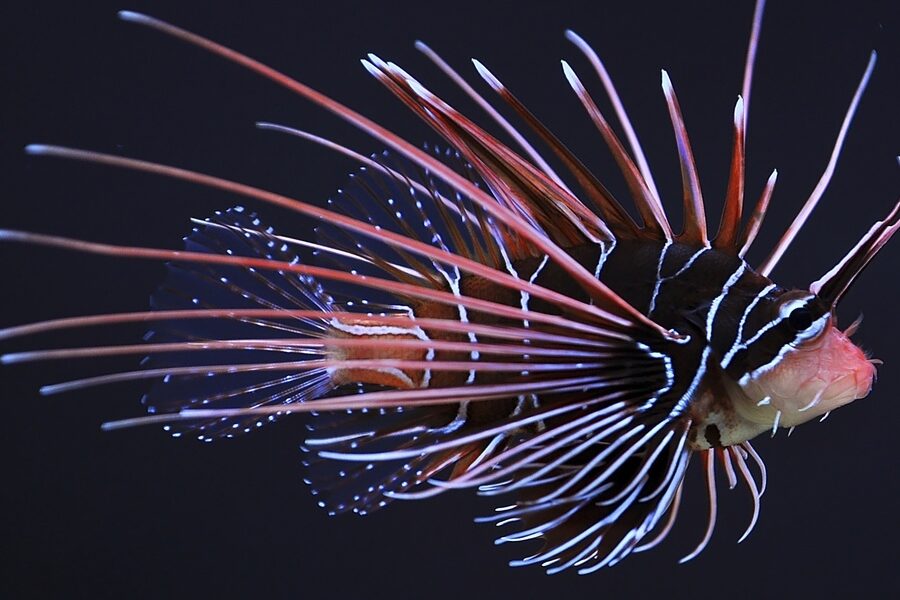The boreal forest, also known as the taiga, is a vast, cold biome stretching across the northern latitudes. It’s characterized by its dense coniferous trees, long winters, and short, intense summers, making it a critical habitat for a unique array of wildlife adapted to these challenging conditions.
In this unique environment, you’ll find 54 boreal forest species, from the formidable American Black Bear to the elusive Woodland Caribou, each playing a vital role in the ecosystem. To help you explore this diverse list, we’ve organized the data by Scientific Name, Type, and Key Adaptation, all of which you’ll find detailed below.
How do animals adapt to the cold conditions of the boreal forest?
Animals in the boreal forest have evolved remarkable strategies to cope with extreme cold and heavy snow. Many grow dense fur or feathers for insulation, while others, like bears, enter states of hibernation during the harshest months. Some species migrate south, and those that remain often develop specialized diets, such as eating conifer needles or bark, to find sustenance when other food sources are scarce.
What are the biggest threats facing boreal forest species today?
Boreal forest species face numerous challenges, primarily from habitat loss due to logging and resource extraction. Climate change also poses a significant threat, altering temperature regimes, increasing the frequency of wildfires, and changing migratory patterns and food availability. Pollution and human encroachment further fragment habitats, making it harder for these species to thrive.
Boreal Forest Species
| Species Name | Scientific Name | Type | Key Adaptation |
|---|---|---|---|
| Moose | Alces alces | Mammal | Long legs for deep snow and wading |
| Canada Lynx | Lynx canadensis | Mammal | Large paws acting as snowshoes |
| Snowshoe Hare | Lepus americanus | Mammal | Seasonal coat color change |
| Gray Wolf | Canis lupus | Mammal | Pack hunting and endurance |
| Wolverine | Gulo gulo | Mammal | Powerful build and frost-resistant fur |
| American Black Bear | Ursus americanus | Mammal | Winter hibernation in dens |
| North American Beaver | Castor canadensis | Mammal | Engineering dams and lodges |
| Woodland Caribou | Rangifer tarandus caribou | Mammal | Specialized digestion of lichens |
| Red Squirrel | Tamiasciurus hudsonicus | Mammal | Creating large food caches (middens) |
| American Marten | Martes americana | Mammal | Semi-retractable claws for climbing |
| Ermine | Mustela erminea | Mammal | Seasonal coat color change |
| Red Fox | Vulpes vulpes | Mammal | Adaptable, omnivorous diet |
| North American Porcupine | Erethizon dorsatum | Mammal | Defensive quills and winter bark diet |
| Great Grey Owl | Strix nebulosa | Bird | Asymmetrical ears for pinpointing sound |
| Gray Jay | Perisoreus canadensis | Bird | Caching food with sticky saliva |
| Spruce Grouse | Falcipennis canadensis | Bird | Specialized diet of conifer needles |
| White-winged Crossbill | Loxia leucoptera | Bird | Crossed bill tips for opening cones |
| Boreal Chickadee | Poecile hudsonicus | Bird | Caching food and shivering thermogenesis |
| Common Loon | Gavia immer | Bird | Solid bones for deep diving |
| Ruffed Grouse | Bonasa umbellus | Bird | Burrowing into snow for insulation |
| Boreal Owl | Aegolius funereus | Bird | Nocturnal hunting in dense forest |
| Northern Goshawk | Accipiter gentilis | Bird | Powerful flight in dense forest |
| Pine Grosbeak | Pinicola enucleator | Bird | Robust beak for crushing seeds |
| Black Spruce | Picea mariana | Conifer Tree | Tolerates cold, wet, acidic soil |
| White Spruce | Picea glauca | Conifer Tree | Shallow root system for thin soil |
| Balsam Fir | Abies balsamea | Conifer Tree | Waxy needles to reduce water loss |
| Tamarack | Larix laricina | Conifer Tree | Deciduous needles to conserve water |
| Jack Pine | Pinus banksiana | Conifer Tree | Serotinous cones opened by fire |
| Lodgepole Pine | Pinus contorta | Conifer Tree | Fire-adapted life cycle |
| Paper Birch | Betula papyrifera | Deciduous Tree | Fast-growing pioneer species |
| Trembling Aspen | Populus tremuloides | Deciduous Tree | Clonal growth from a single root system |
| Balsam Poplar | Populus balsamifera | Deciduous Tree | Resinous buds for protection |
| Labrador Tea | Rhododendron groenlandicum | Flowering Plant | Woolly leaf undersides to reduce water loss |
| Fireweed | Chamerion angustifolium | Flowering Plant | Rapid colonization of burned areas |
| Bunchberry | Cornus canadensis | Flowering Plant | Low-growing habit below snow |
| Highbush Cranberry | Viburnum trilobum | Flowering Plant | Persistent fruit for winter food |
| Common Bearberry | Arctostaphylos uva-ursi | Flowering Plant | Evergreen leaves and drought tolerance |
| Bluebead Lily | Clintonia borealis | Flowering Plant | Slow growth in low light |
| Reindeer Lichen | Cladina rangiferina | Lichen | Ability to survive extreme desiccation |
| Old Man’s Beard | Usnea spp. | Lichen | Absorbs nutrients from the air |
| Fly Agaric | Amanita muscaria | Fungus | Mycorrhizal relationship with trees |
| Chaga Mushroom | Inonotus obliquus | Fungus | Parasitic growth on birch trees |
| Northern Pike | Esox lucius | Fish | Lie-and-wait ambush predator |
| Walleye | Sander vitreus | Fish | Tapetum lucidum for low-light vision |
| Lake Trout | Salvelinus namaycush | Fish | Adapted to deep, cold, oxygen-rich water |
| Arctic Grayling | Thymallus arcticus | Fish | Large dorsal fin for maneuvering in currents |
| Burbot | Lota lota | Fish | Active hunter under winter ice |
| Spruce Budworm | Choristoneura fumiferana | Insect | Timed life cycle with tree growth |
| Mountain Pine Beetle | Dendroctonus ponderosae | Insect | Overcomes tree defenses en masse |
| Mosquito | Family Culicidae | Insect | Larvae develop in temporary pools |
| Black Fly | Simulium spp. | Insect | Larvae attach to rocks in flowing water |
| Wood Frog | Rana sylvatica | Amphibian | Can freeze solid and survive |
| Boreal Chorus Frog | Pseudacris maculata | Amphibian | Freeze tolerance and early breeding |
| Canadian Toad | Anaxyrus hemiophrys | Amphibian | Burrowing below the frost line |
Images and Descriptions
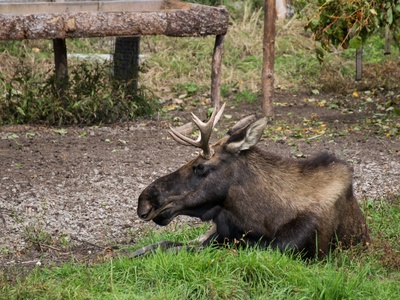
Moose
The largest member of the deer family, easily recognized by its massive size and palmate antlers. Its long legs allow it to navigate deep snow and wade into lakes to feed on aquatic plants, making it perfectly suited for the boreal landscape.
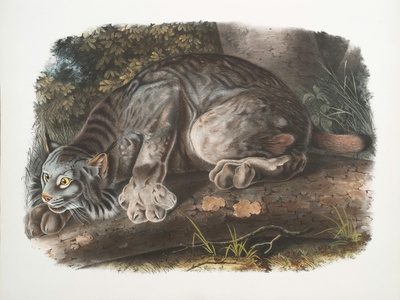
Canada Lynx
A secretive, medium-sized cat with tufted ears and a short tail. Its huge, furry paws distribute its weight, allowing it to stay on top of the snow and efficiently hunt its primary prey, the snowshoe hare, in deep winter conditions.
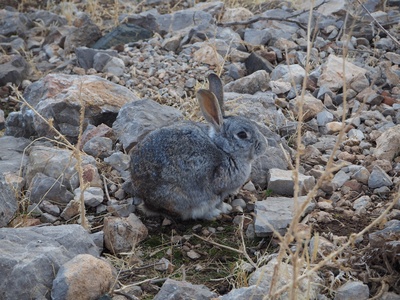
Snowshoe Hare
Named for its large, furry hind feet that act like snowshoes. This herbivore is a cornerstone of the boreal food web. Its coat changes from brown in summer to white in winter, providing excellent camouflage from predators like the lynx.
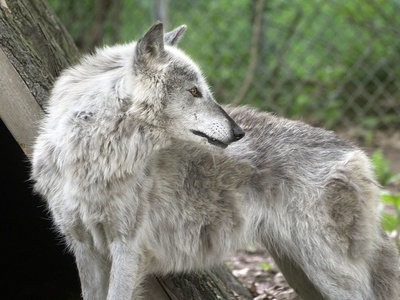
Gray Wolf
A highly intelligent and social apex predator that lives and hunts in packs. Its thick fur coat, stamina, and cooperative hunting strategies allow it to take down large prey like moose and caribou, playing a vital role in ecosystem health.
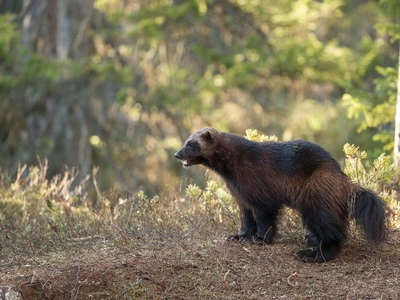
Wolverine
A legendary and elusive member of the weasel family, known for its incredible strength and ferocity. Its dense, oily fur resists frost, and its powerful jaws can crush frozen meat and bone, making it a supreme winter scavenger and predator.
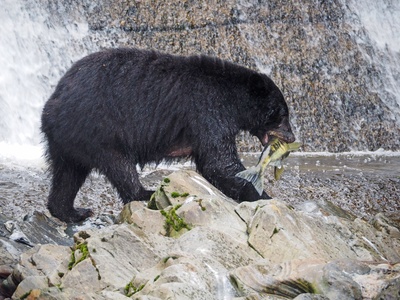
American Black Bear
The most common bear in North America, this opportunistic omnivore survives the long winters by entering a state of hibernation in a den. This process significantly slows its metabolism, allowing it to conserve energy until spring returns.
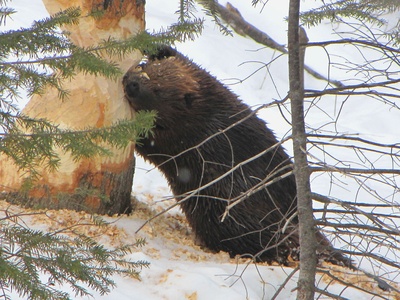
North American Beaver
A keystone species, this large, semi-aquatic rodent famously alters its environment by building dams and lodges. These structures create vital wetland habitats for countless other species and provide a safe home to survive winter under the ice.
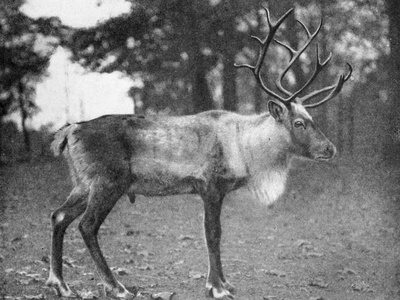
Woodland Caribou
A subspecies of caribou adapted to forest life. Its large, crescent-shaped hooves act as snowshoes and paddles. Uniquely, it can digest lichens, its primary winter food source, which it finds on old-growth trees and beneath the snow.
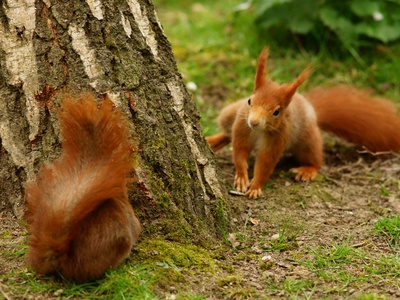
Red Squirrel
A small, energetic, and vocal rodent that does not hibernate. It survives winter by collecting and storing thousands of spruce and pine cones in large piles called middens, ensuring a reliable food supply through the coldest months.
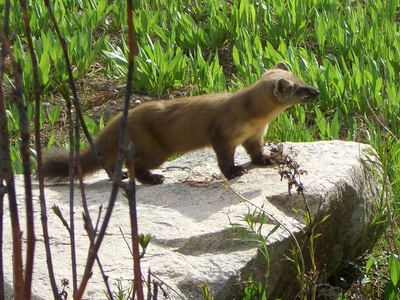
American Marten
A slender, agile member of the weasel family that is an expert tree climber. It primarily hunts squirrels, mice, and birds within the forest canopy. Its rich, brown fur has historically made it a target of the fur trade.

Ermine
Also known as the short-tailed weasel, this small, fierce predator hunts rodents under the snow. Its coat turns from brown to pure white in winter for camouflage, leaving only the black tip of its tail. This white pelt is known as ermine.
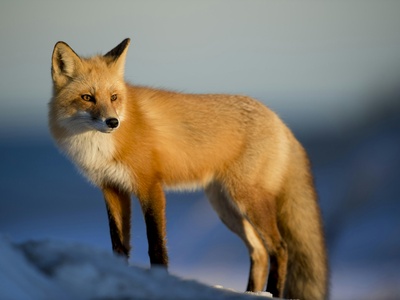
Red Fox
A highly adaptable canine with a bushy tail and a keen sense of hearing. While found worldwide, its thick winter coat makes it well-suited for boreal life. It hunts small mammals by listening for movement under the snow and pouncing.
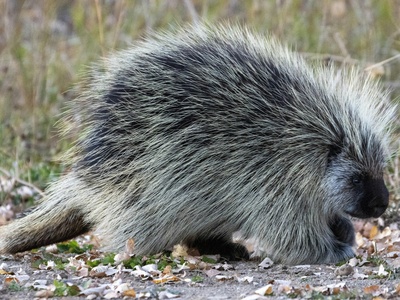
North American Porcupine
A large, slow-moving rodent covered in up to 30,000 sharp quills for defense. It is an excellent climber and survives the winter by feeding on the inner bark of trees like spruce, pine, and birch, often leaving visible scars.

Great Grey Owl
One of the world’s largest owls, its huge facial disc funnels sound to its asymmetrically placed ears. This allows it to pinpoint the exact location of rodents moving beneath more than a foot of snow, which it then plunges to catch.
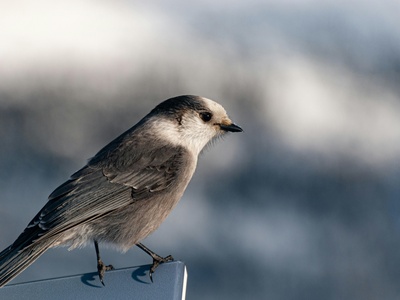
Gray Jay
Also known as the Canada Jay or “whiskey jack,” this remarkably intelligent bird remains in the boreal forest year-round. It survives winter by storing thousands of food items, using its unique, sticky saliva to glue morsels in safe places.
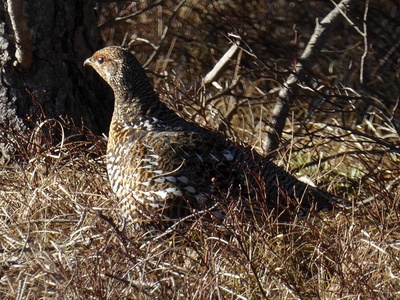
Spruce Grouse
Often called the “fool hen” for its tame nature, this bird is a master of camouflage. It survives the winter almost exclusively by eating conifer needles, thanks to a specialized gizzard and digestive tract that can handle this tough, resinous food.
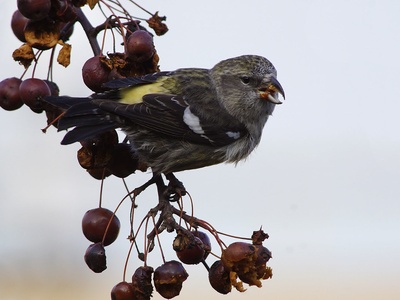
White-winged Crossbill
A nomadic finch whose movements are tied to cone crops. Its unique bill, with crossed tips, is a perfect tool for prying open the scales of spruce and tamarack cones to extract the seeds, giving it access to a protected food source.
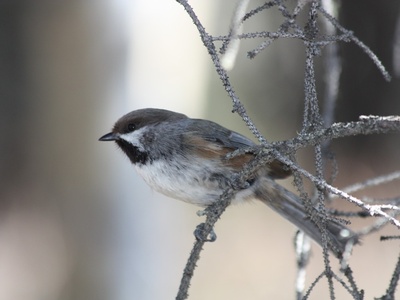
Boreal Chickadee
A small, hardy songbird that resides in the boreal forest year-round. It has a brown cap instead of the Black-capped Chickadee’s black one. It survives extreme cold by caching seeds, finding dormant insects, and shivering to generate heat.
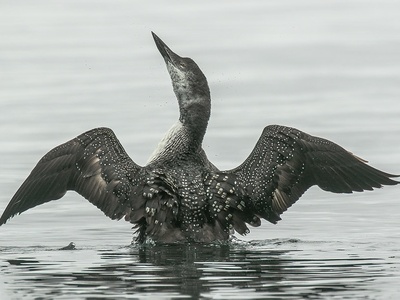
Common Loon
The haunting calls of this iconic bird echo across boreal lakes. Unlike most birds, it has solid bones, which reduce buoyancy and allow it to be a powerful underwater hunter, pursuing fish with torpedo-like efficiency. It migrates for winter.
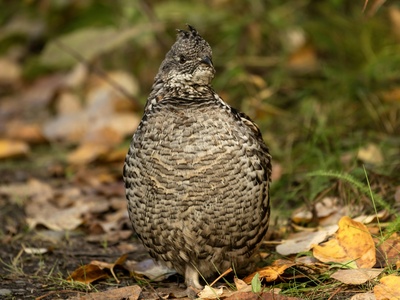
Ruffed Grouse
Known for the male’s “drumming” sound produced by beating its wings. In winter, this bird can dive directly into soft, deep snow to create an insulated roosting cavity, protecting it from extreme cold and predators.
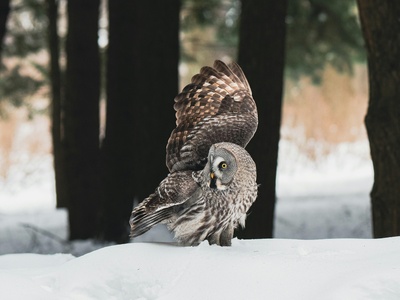
Boreal Owl
A small, elusive, and strictly nocturnal owl of the deep boreal forest. It has a surprised expression due to its white facial disc and yellow eyes. It hunts small mammals and birds, relying on exceptional hearing in the dark.
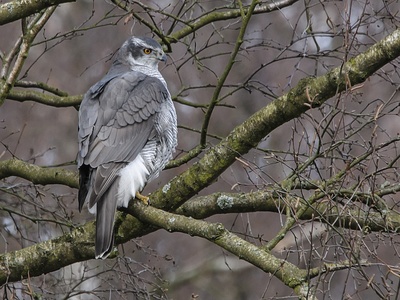
Northern Goshawk
A large and powerful forest hawk known for its aggressive defense of its nest. It is a year-round resident of the boreal region, capable of swift, agile flight through dense trees to ambush prey like grouse, hares, and squirrels.

Pine Grosbeak
A large, plump, and slow-moving finch. Males are a rosy-red color. It is a year-round resident of the taiga, using its stout beak to eat seeds, buds, and berries. It is often quite tame and approachable.
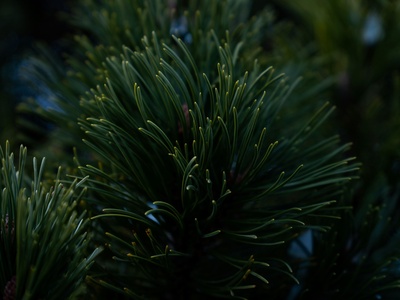
Black Spruce
A quintessential tree of the boreal forest, dominating vast areas of muskeg. Its narrow, cone-like shape helps shed heavy snow, and its ability to reproduce by layering allows it to thrive in the harshest, waterlogged conditions.
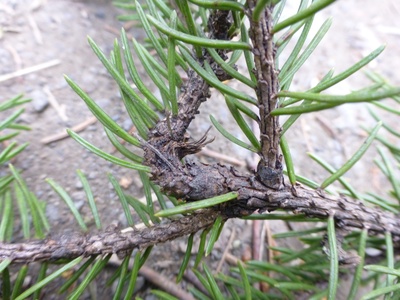
White Spruce
A common and economically important boreal tree. Its pyramidal shape sheds snow effectively, and its shallow, wide-spreading root system allows it to anchor itself in the thin, often rocky soils that overlie permafrost or bedrock.
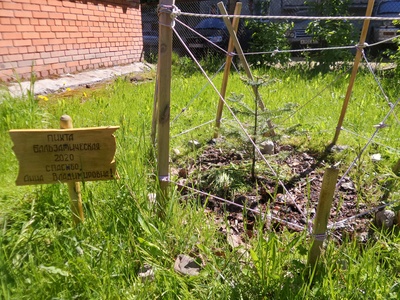
Balsam Fir
A classic Christmas tree, known for its pleasant scent and flat, soft needles. Its bark has resin-filled blisters. The waxy coating on its needles is a key adaptation to prevent water loss during the long, dry winters.
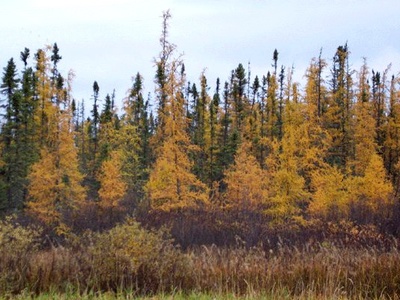
Tamarack
A unique conifer that is not evergreen. In the fall, its soft, green needles turn a brilliant golden-yellow before dropping off. This strategy helps it conserve water and survive the extreme cold and dry conditions of the boreal winter.
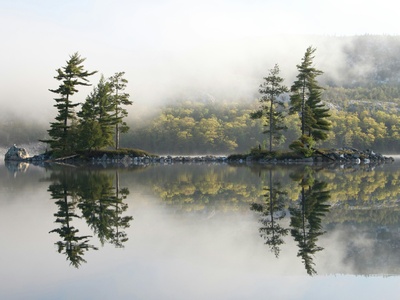
Jack Pine
A hardy, rugged pine adapted to forest fires. Its cones are serotinous, meaning they are sealed shut with resin and require the intense heat of a fire to open and release their seeds, allowing it to regenerate on the newly cleared landscape.
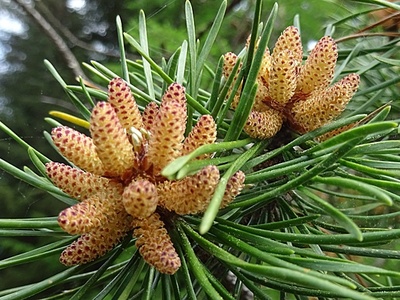
Lodgepole Pine
Named for its tall, straight trunk used by Indigenous peoples for lodge poles. Like the Jack Pine, it has serotinous cones that release seeds after a fire, making it a dominant pioneer species in the western boreal forest.
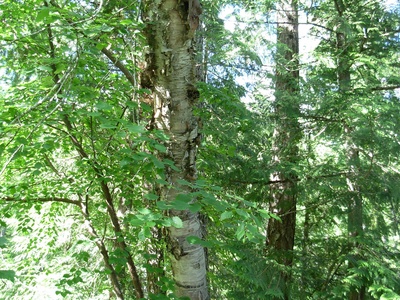
Paper Birch
Instantly recognizable by its beautiful, white, peeling bark. As a pioneer species, it quickly colonizes areas disturbed by fire or logging. Its waterproof bark was traditionally used by Indigenous peoples for making canoes and shelters.
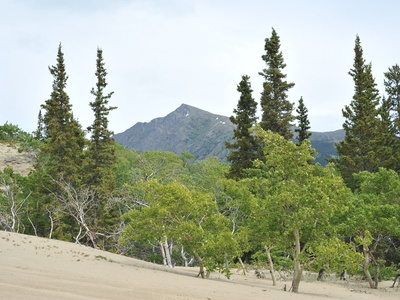
Trembling Aspen
Named for its leaves that tremble in the slightest breeze. Aspens often grow in large stands that are a single organism, connected by a massive root system. This allows them to quickly regenerate new shoots after a fire.
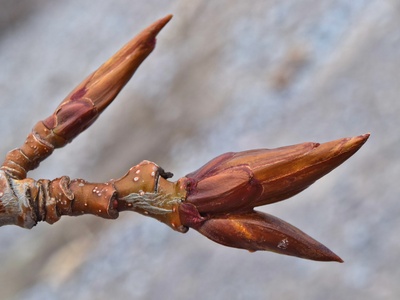
Balsam Poplar
A fast-growing tree common along rivers and in moist areas. Its large, sticky buds are covered in a fragrant, medicinal resin that protects them from insects and cold. It is one of the first trees to leaf out in the spring.
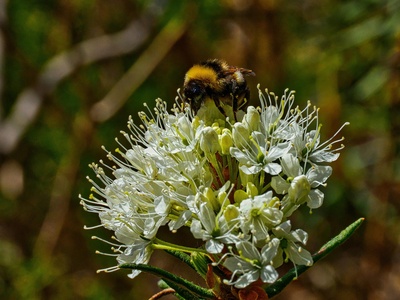
Labrador Tea
A low-lying evergreen shrub common in bogs. The undersides of its leathery leaves are covered in dense, fuzzy hairs that trap moisture and insulate the leaf, a critical adaptation for surviving both dry winds and cold temperatures.
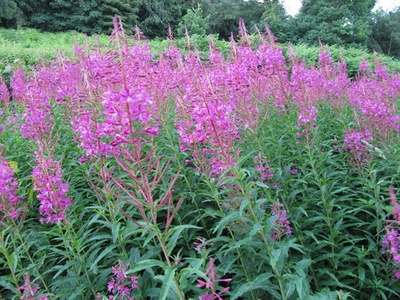
Fireweed
A tall, beautiful plant with spires of bright pink flowers. It is a true pioneer species whose light, fluffy seeds travel long distances on the wind. It thrives in the nutrient-rich ash left after a forest fire, stabilizing the soil.
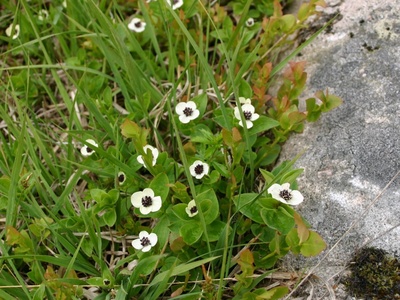
Bunchberry
A common ground cover on the forest floor, related to dogwood trees. Its low stature allows it to be insulated by the snowpack during winter. It produces a whorl of leaves, a white flower, and a cluster of bright red, edible berries.
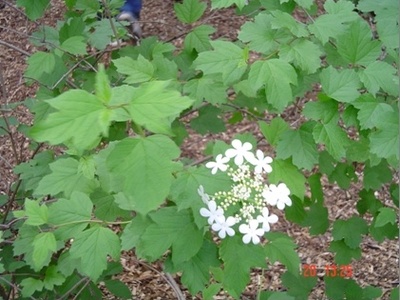
Highbush Cranberry
A deciduous shrub that produces clusters of bright red, tart berries. The fruit often persists on the branches long into the winter, providing a vital food source for birds like waxwings and grosbeaks after other foods have disappeared.
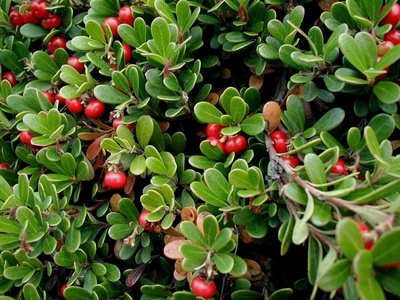
Common Bearberry
Also known as kinnikinnick, this is a very low-lying, trailing evergreen shrub. It forms dense mats on the ground in sandy or rocky soils. Its tough, leathery leaves are an adaptation to dry, nutrient-poor conditions.
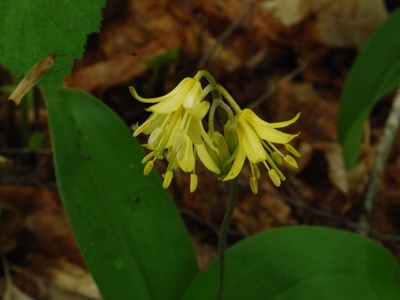
Bluebead Lily
A common plant of the shaded forest floor, recognizable by its two or three large, glossy basal leaves. It grows very slowly, adapted to the low-light conditions under the canopy, and produces a striking, but toxic, deep blue berry.
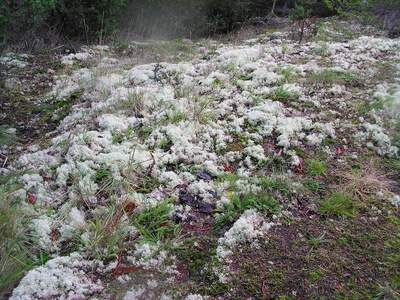
Reindeer Lichen
Not a plant, but a symbiotic organism of fungus and algae. It forms crunchy, grey-green mats on the forest floor and is the primary winter food for caribou. It can go dormant when dry and rehydrate quickly when moisture is available.
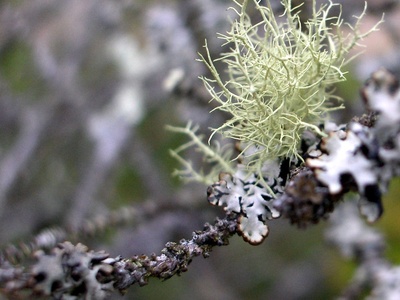
Old Man’s Beard
This lichen hangs from the branches of trees in hair-like tufts. It is highly sensitive to air pollution, so its presence indicates a healthy, clean environment. It absorbs all of its moisture and nutrients directly from the atmosphere.
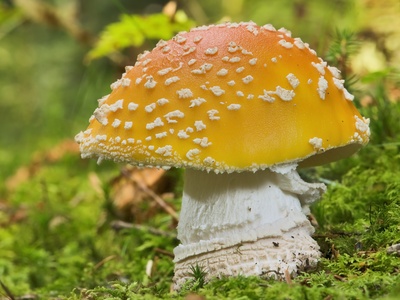
Fly Agaric
The iconic, fairy-tale toadstool with a bright red cap and white spots. It is not just a decomposer; it forms a vital symbiotic (mycorrhizal) relationship with the roots of birch and pine trees, helping them absorb nutrients from the soil.
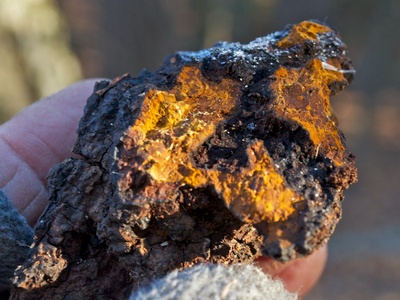
Chaga Mushroom
A parasitic fungus that grows on birch trees, appearing as a hard, black, crusty mass that looks like burnt charcoal. It causes heart rot in the host tree and has been harvested for centuries for use in traditional medicine.
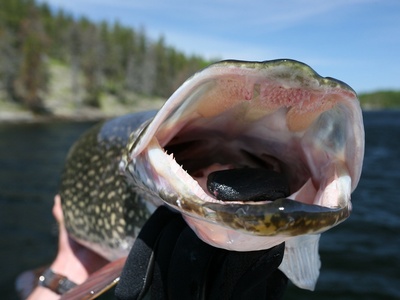
Northern Pike
A long, powerful fish with a mouth full of sharp teeth, often called the “water wolf.” It is a top aquatic predator in boreal lakes and slow rivers, perfectly camouflaged to ambush fish, frogs, and even small waterfowl.
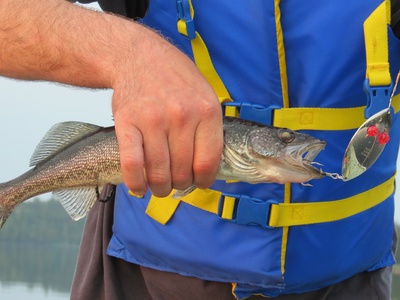
Walleye
Named for its large, opaque-looking eyes, which contain a reflective layer of pigment (tapetum lucidum) that helps it see in low-light conditions. This makes it an effective predator at dawn, dusk, and in murky water.
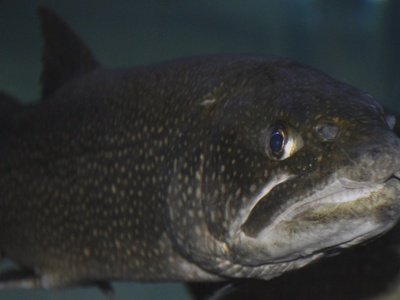
Lake Trout
A top predator in the largest and deepest lakes of the boreal shield. It thrives in the cold, highly oxygenated water found far below the surface. They are very slow-growing and can live for several decades.
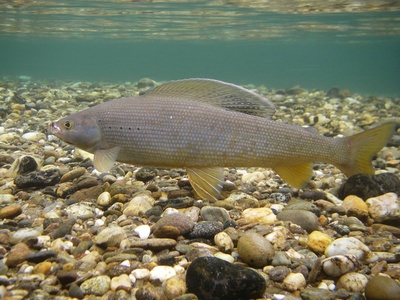
Arctic Grayling
A beautiful fish known for its strikingly large and colorful dorsal fin. It is highly sensitive to pollution and is an indicator of pristine, cold, and clear water environments, often found in the rivers and lakes of the northern boreal forest.
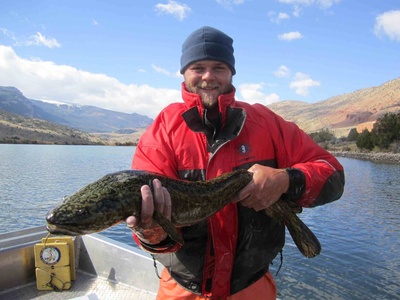
Burbot
The only member of the cod family that lives entirely in freshwater. This unique, eel-like fish is most active during the winter, even spawning under the ice when other fish are sluggish, giving it a competitive advantage.
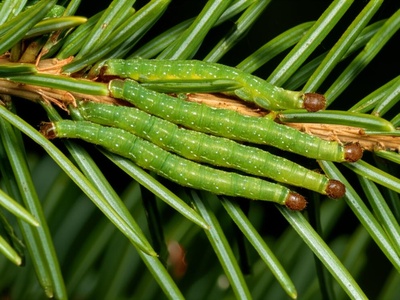
Spruce Budworm
A native moth whose larvae are a major force of natural disturbance. During massive, cyclical outbreaks, they defoliate vast areas of balsam fir and spruce. This process, while destructive, plays a role in forest renewal and succession.
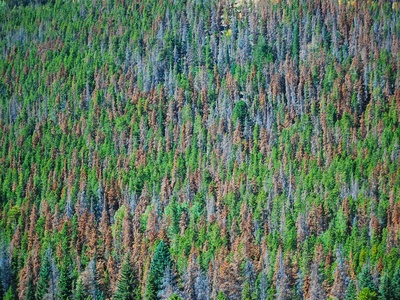
Mountain Pine Beetle
A species of bark beetle that can kill vast numbers of pine trees during epidemic outbreaks. The beetles bore under the bark and introduce a blue stain fungus, cutting off the flow of nutrients and overwhelming the tree’s defenses.
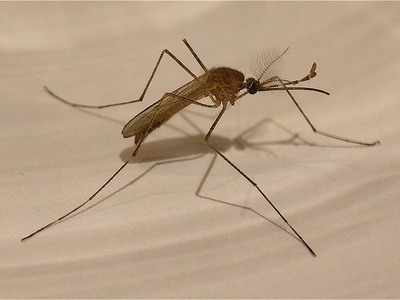
Mosquito
Infamous summer residents of the boreal forest. They lay their eggs in the countless stagnant ponds, bogs, and puddles created by snowmelt. The enormous seasonal hatches provide a critical food source for birds, dragonflies, and fish.

Black Fly
A small, biting fly that is abundant in the boreal forest, especially near rivers and streams where its larvae develop. The adults can be a major nuisance, but the larvae are an important part of the aquatic food web.
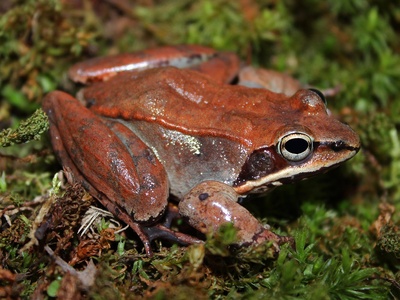
Wood Frog
This remarkable frog has a unique adaptation for surviving boreal winters. It allows up to 65% of its body to freeze solid, using high concentrations of glucose in its cells as a cryoprotectant to prevent damage, thawing out in the spring to breed.
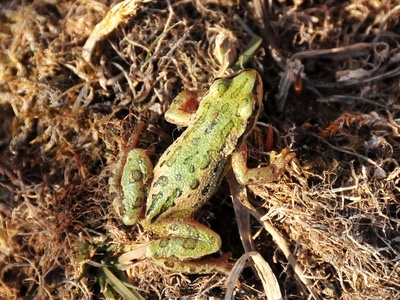
Boreal Chorus Frog
A small frog with a call that sounds like running a finger along a comb. Like the Wood Frog, it can survive being partially frozen. It is one of the very first amphibians to begin calling and breeding in the spring, often when ice is still on the ponds.
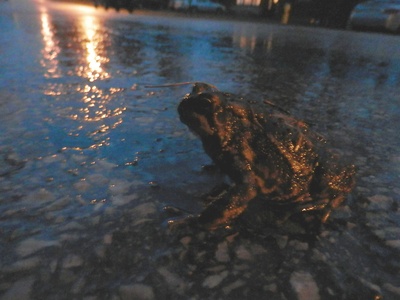
Canadian Toad
This toad survives the harsh winters by burrowing deep into the soil, often using the burrows of small mammals. By getting below the frost line, it can avoid freezing and remain dormant until the ground thaws in the spring.
